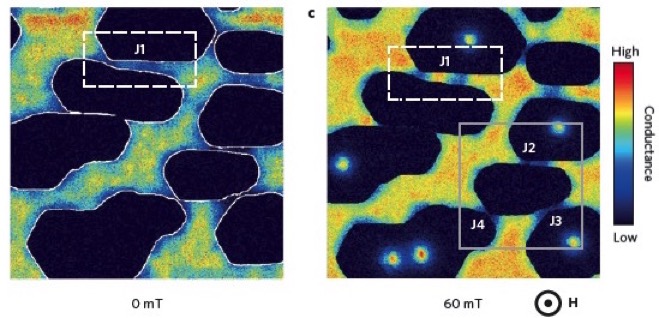The discovery of proximity Josephson vortices
23/02/15 21:59
When a normal metal is brought in contact with a superconductor, Cooper pairs may leak into the metal inducing genuine superconducting properties in it, an effect generically referred to as proximity effect. In particular, if a metal is sandwiched between two superconductors, it can sustain the flow of a dissipationless or Josephson current. When a magnetic is applied to a Josephson junction, the Josephson currents oscillate along the interface splitting up the junction into regions that enclose no net current, which are known as Josepshon vortices. Contrary to Abrikosov vortices in type II superconductors, the Josephson vortices are supposed to lack of a normal core (where the superconductivity is completely suppressed). However, in 2007 Sebastian Bergeret and myself predicted that if the weak link is made of a diffusive metal, the junctions can sustain Josephson vortices with true vortex cores inside the metal. In this work, we report the first direct observation of these proximity Josephson vortices. Our junctions are made of superconducting Pb nanoislands weakly linked by a normal (atomically thin) wetting layer of Pb, which is not superconducting. The Josephson vortices were imaged by means of a low-temperature scanning tunneling microscope, and they were revealed by the spatial modulation of the local density of state in the wetting layer induced by the magnetic field. Our results strongly suggest that it should be possible to induce these proximity vortices in novel quantum devices by purely electrical means. Moreover, we may anticipate the observation of these vortices in other superconducting weak links made of low-dimensional materials such a graphene.


